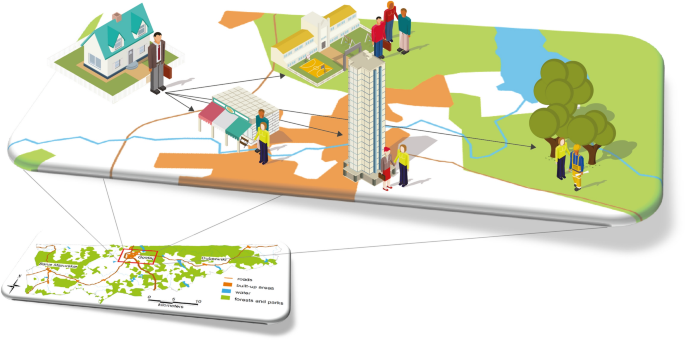Forecasting the COVID-19 pandemic using multi-agent modeling
Published in Research Data

The pandemic is ongoing, and continued viral transmission allows for the accumulation of mutations in the viral genome, which can improve viral replication, immune escape, and increase transmissibility. Given these fast-evolving SARS-CoV-2 variants, it remains critical to develop our understanding of the spread of this virus and disease. Indeed, the challenges of studying the dynamics of SARS-CoV-2 transmission has increased interest in epidemiological modeling and prediction research worldwide. In article “Using multiagent modeling to forecast the spatiotemporal development of the COVID-19 pandemic in Poland” https://rdcu.be/cQXKY, the authors present an agent-based simulation model (ABM) that simulates the spread of the COVID-19 pandemic at the regional administrative level in Poland. The ‘what-if’ system model that the paper describes is a multi-agent generalization of the SEIR epidemiological model, which enables prediction of the pandemic's course in various regions of Poland, taking into account Poland's spatial and demographic diversity, residents' level of mobility, and, primarily, the level of restrictions imposed and degree of associated compliance. The simulation system developed in this study considers detailed demographic data, topographic models and lifestyle factors specific to each community. The proposed agent-based simulation model achieves its high level of accuracy in part because it individually models each person living in each poviat (an administrative unit of Poland, of which there are 380) as a numerical agent. Thus, it provides a highly detailed model of social interactions and disease transmission. The model, made publicly available as free software, was tested in three representative regions of Poland. The ABM modelling tool used in this study was the GAMA Platform (https://gama-platform.org/), which allows for flexible model adjustment, application to other geographic areas, as well as scaling to provinces, counties, states or even countries. The results demonstrate that implementing social distancing and limiting mobility is crucial for impeding pandemic spread before the development of an effective vaccine. The model also shows the importance of social, demographic, and topographic features, which can help inform appropriate measures for a given region.
The proposed agent-based simulation model gives a highly useful yet still valid tool to predict the probability of infection transmission in a given region.
Our model may serve as a resource for authorities considering the introduction of restrictions by region to prevent virus transmission, making it a powerful potential tool to understand and combat both current and future pandemics. The next “wave” of COVID-19 may occur in the fall of this year.
Follow the Topic
-
Scientific Reports

An open access journal publishing original research from across all areas of the natural sciences, psychology, medicine and engineering.
Related Collections
With Collections, you can get published faster and increase your visibility.
Reproductive Health
Publishing Model: Hybrid
Deadline: Mar 30, 2026
Women’s Health
Publishing Model: Open Access
Deadline: Feb 14, 2026


Please sign in or register for FREE
If you are a registered user on Research Communities by Springer Nature, please sign in